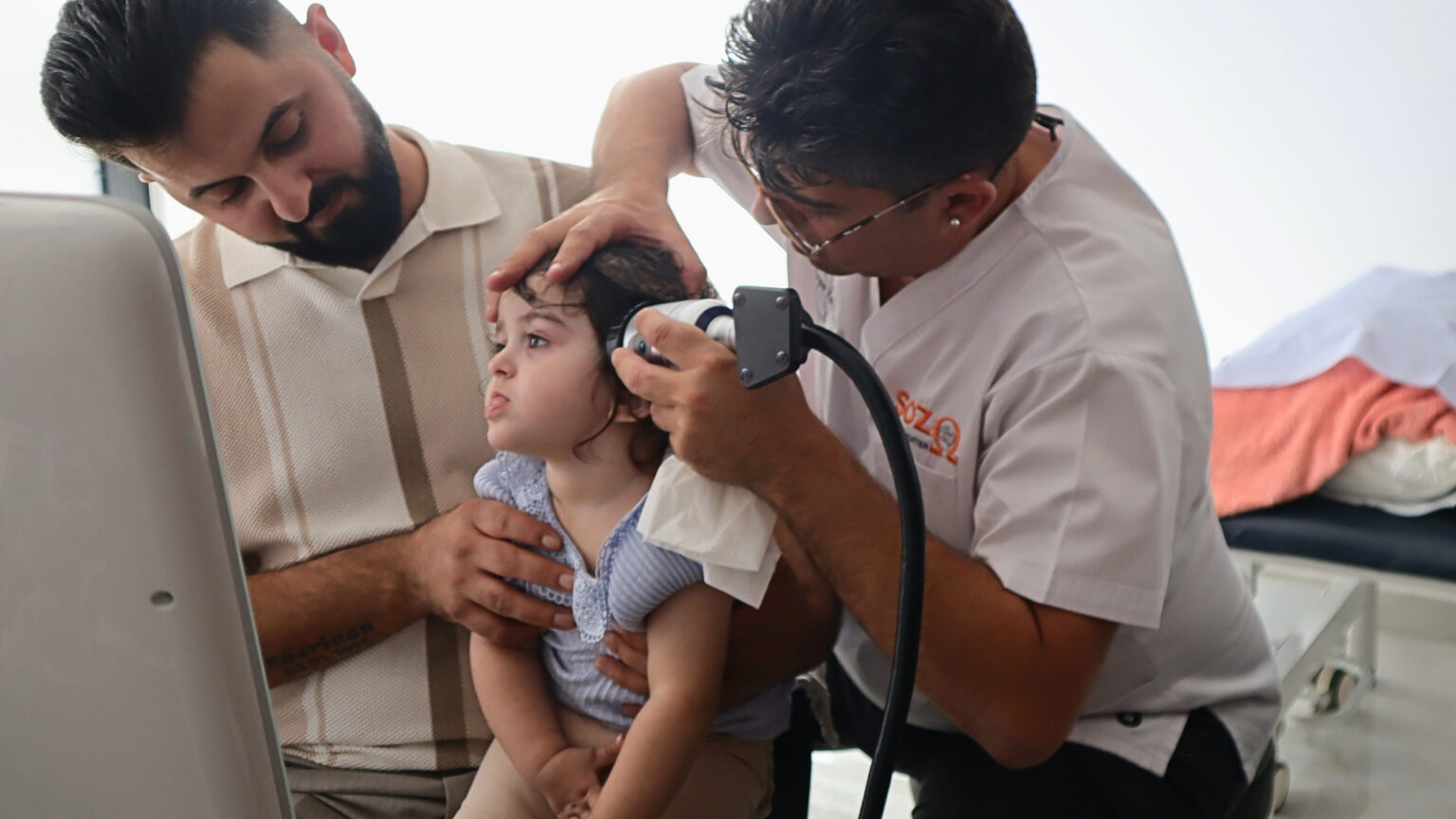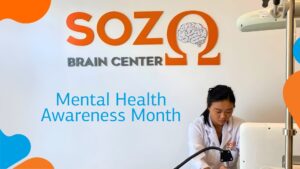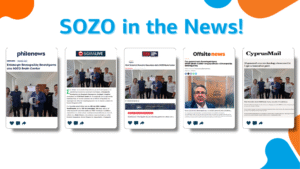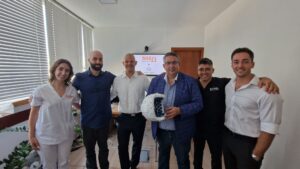When you hear the words “brain stimulation,” it can sound intimidating or even concerning. But not all forms of brain stimulation involve surgery or wires inside the head. Modern techniques used at SOZO Brain Center deliver gentle electrical waves or pulses to the scalp to help the brain work more efficiently.
These approaches are known as non-invasive neuromodulation techniques, and growing research suggests they may benefit children with conditions such as ADHD, learning disabilities, autism, dyslexia, anxiety, and more.
In children, this type of therapy uses low electrical subthreshold stimulation of the brain, helping different areas communicate and work together more smoothly.
Let’s look at what these treatments are, how they work, what we know about their safety, and what parents should keep in mind before exploring them.
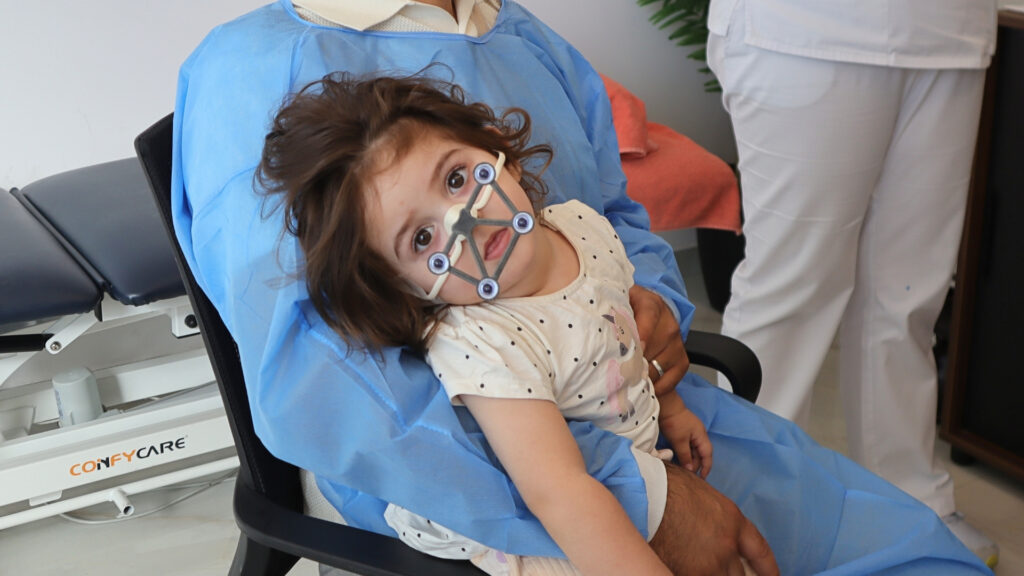
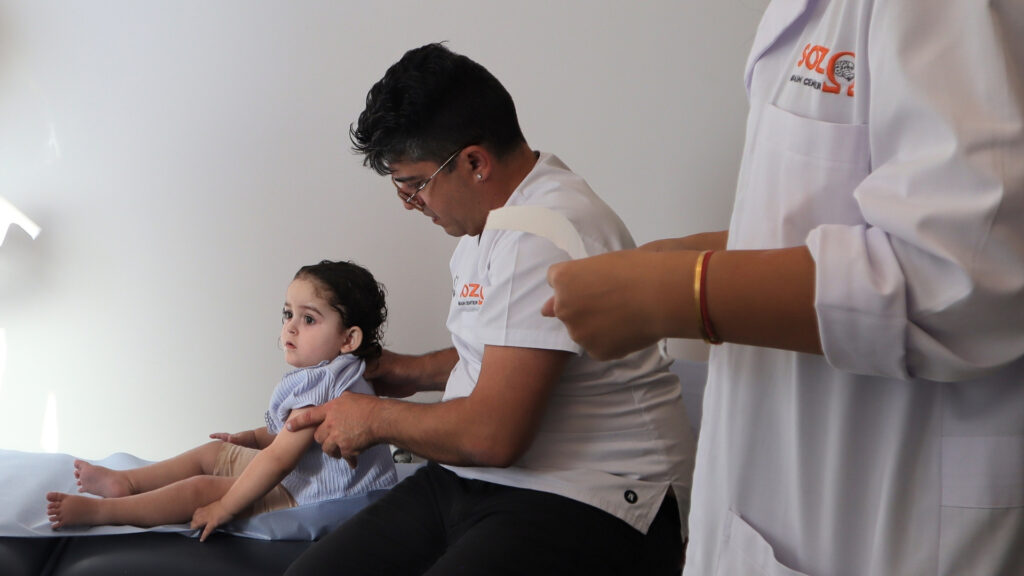
What is Non-Invasive Neuromodulation? (Explained Simply)
Think of the brain like a busy orchestra. Sometimes a few instruments (or brain regions) play too loudly or too softly, throwing things out of sync. Non-invasive brain stimulation helps bring the rhythm back into balance using tiny, precisely delivered signals –without surgery.
At SOZO Brain Center, different types of neuromodulation are used, such as:
tDCS (Transcranial Direct Current Stimulation)
tDCS is a safe, non-invasive technique that delivers a low electrical current to specific areas of the brain. It has been shown to support regions involved in mood, focus and learning, helping with challenges such as depression, anxiety, attention difficulties, and memory problems.
Researchers are also exploring how tDCS may benefit children and teens with ADHD, learning differences, cerebral palsy, and depression. Because the current is …, it doesn’t force neurons to fire, it simply makes them a bit more or less likely to activate naturally, guiding the brain toward healthier, more balanced patterns of activity.
taVNS (Transcutaneous Auricular Vagus Nerve Stimulation)
taVNS is a non-invasive neuromodulation technique that delivers gentle electrical impulses through the auricular branch of the vagus nerve. taVNS can support the body’s natural ability to regulate stress, inflammation, and mood both peripherally and centrally by modulating parasympathetic response and balancing the autonomic nervous system.
Our taVNS device is approved for use in children aged 3 years and older under the European Medical Device Regulation (EU-MDR 2017/745) for a wide variety of neurological and neuropsychiatric conditions, including epilepsy, autism, and Prader-Willi syndrome.
CES (Cranial Electrotherapy Stimulation)
CES uses a very mild current, usually delivered through small clips on the earlobes. It’s been shown to help reduce anxiety, improve sleep, and lift mood, often without the side effects that can come with medication. Many people describe feeling calmer, more rested, and more emotionally balanced after treatment.
TPS (Transcranial Pulse Stimulation)
TPS uses low-energy sound waves to reach deeper parts of the brain, especially those involved in memory and movement. Early studies show promising results for people with neurological or memory-related conditions.
What We Know So Far About Safety
The encouraging news is that, in studies with children and teens, these treatments are safe and well-tolerated when performed by trained professionals using the right settings.
Here’s what most kids say they feel:
- A mild tingling or warm sensation on the scalp
- Slight itchiness or redness where the pads touch the skin
- Occasionally, a mild headache or some tiredness afterward
These effects are usually brief and fade within minutes. Serious side effects —such as seizures or injury—are extremely rare when the procedure is done properly in medical environments.
Because children’s brains are still developing, scientists and clinicians continue to study these treatments carefully to ensure long-term safety and effectiveness.

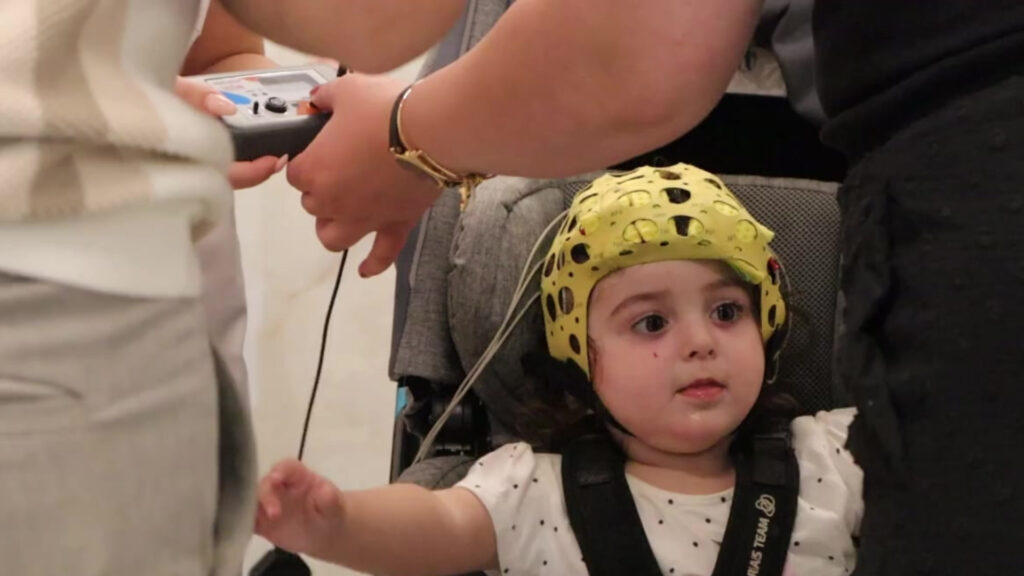
Real Patient Story: Ella, Cerebral Palsy, Hypoxic Brain Injury
Ella’s parents brought her to SOZO Brain Center in Cyprus for treatment after years of struggling to find answers. Ella was born with cerebral palsy caused by a hypoxic brain injury, leading to muscle stiffness (spasticity) that made movement and daily activities difficult.
Below you can watch her mother and father’s testimony about their experience having Ella be treated with non-invasive neuromodulation at SOZO Brain Center.
It’s a story her parents shared with us to give hope to other families searching for answers, just as they once were. Her mother shared that “Ella has been crying since she was born. We didn’t know what was going on,” explaining that Petros Kattou, Chief Neuromodulation Officer at SOZO Brain Center, confirmed what no one else had been able to tell them so precisely. That their daughter Ella has spasticity all over her body. Spasticity means the muscles stay tight and contracted because of signals from the brain that don’t relax properly. It can make movement, speech, and everyday activities very difficult. In Germany, Ella was receiving physiotherapy, but her parents saw little change.
And so began their search; hours spent online, reading, watching, hoping. One night, they found videos from SOZO Certified Dr. Adel Rayess and Florian Schöning, showing the pioneering work being done with non-invasive neuromodulation.
That search led them to SOZO Brain Center, with Ella first visiting the Advanced Neuromodulations Technique Workshop in Berlin and then visiting the clinics in Cyprus as a patient. They started treatment on Monday and by Wednesday they noticed positive changes. Within days of starting treatment, Ella’s parents noticed encouraging changes. Her toes and arms became less stiff, her motor skills improved, she was drinking better, finishing her milk bottles in half the time it used to take and drinking more milk. She has also been calm, more engaged, and smiling, a huge shift. “She’s really, really happy,” her parents shared.
Ella’s story shows how longstanding spasticity and cerebral palsy can improve with innovative, carefully monitored treatments.
At SOZO Brain Center, children like Ella receive personalized, evidence-based neuromodulation therapy that combines cutting-edge science with compassionate care, helping them thrive with greater independence and joy.

Tips for Parents
If you’re considering neuromodulation as a supporting treatement for your child:
- • Ask questions. What condition is it designed to help? What research supports its use in children? How many sessions are typically needed?
- Work with qualified professionals. Always choose devices and treatment plans supervised by medical practitioners who are trained and experienced in neuromodulation.
- Neuromodulation isn’t meant to replace therapy, medication, or educational support. It works as part of a comprehensive care plan.
The Bottom Line
Non-invasive neuromodulation is one of the most promising frontiers in modern neuroscience for supporting children with developmental and neurological challenges.
Current evidence shows that low-level stimulation is safe and well tolerated when used properly, producing only mild and temporary side effects. At SOZO Brain Center, treatments are gentle, personalized, and guided by experienced clinicians who prioritize each child’s well-being and long-term progress.
When science and compassion come together, remarkable things can happen—helping young brains grow, adapt, and thrive.
